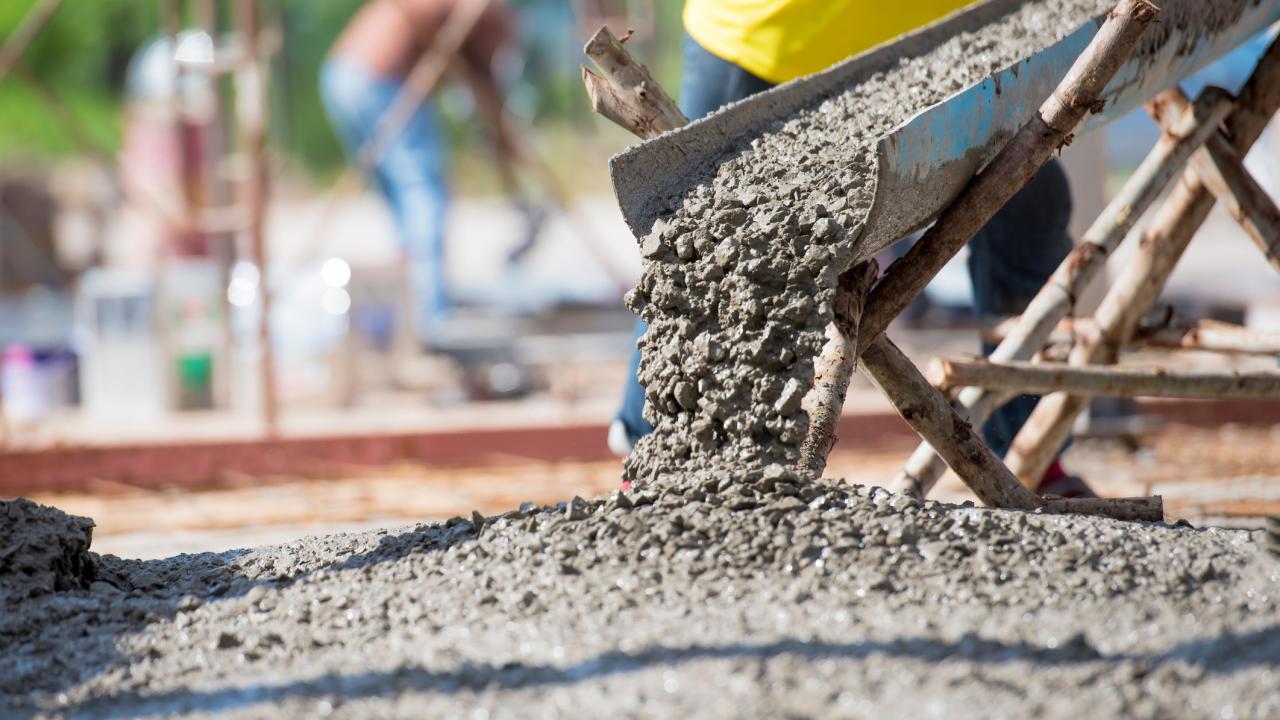Cement is the world’s most important building material. When mixed with water, cement glues together the sand and gravel in concrete, used for buildings, roads, tunnels, bridges, dams, pipes and other kinds of infrastructure. The world produces an astonishing four billion metric tons of cement a year — half a ton for everyone on Earth. Because it is the most critical material for creating infrastructure, demand for cement is growing faster than population growth. But cement production also makes a significant contribution to global greenhouse gas emissions and researchers are looking for ways to reduce this impact.
In a new perspective article for the journal One Earth, Sabbie Miller and John Harvey, both of the UC Davis department of Civil and Environmental Engineering, and colleagues at ETH Zurich and Imperial College London break down the greenhouse emissions challenges facing the cement industry and present a strategy to get to zero emissions. Miller is an assistant professor; Harvey is a professor and director of the Pavement Research Center at UC Davis.
In September of this year, Gov. Gavin Newsom signed a bill requiring the cement industry to achieve net-zero emissions in California as soon as possible but not later than 2045. Cement production is responsible for 1.9% of the greenhouse gas emissions in the state. While that is far less than the 36% of emissions from driving cars and trucks in California, it is an important point source.
“We have been having conversations with advocates for that policy to explain the science behind mitigation efforts for such a complex material,” Miller said.
Globally, cement is responsible for about five percent of greenhouse gas emissions. The article takes a global view, including consideration of equity between the developed and developing worlds of cement use.
Driving down emissions from cement and concrete production requires action at every step in infrastructure life from mining the raw materials, through manufacture and use, to demolition and retirement, Miller and colleagues argue.
Energy-hungry production
Cement production involves super-heating limestone in kilns to drive carbon dioxide out of the rock and into the atmosphere. A lot of the effort so far on “decarbonizing” cement production has focused on reducing fossil fuel energy for kilns through replacement with other fuel sources, including tires and industrial waste. Kilns could also be designed to include technology to capture and store or reuse the carbon dioxide given off in the process. An obstacle to these steps is that cement plants are generally large, old facilities with a long lifetime producing a high volume of product at a low profit margin, giving little incentive for private investment in updating plants.
Cement replacement
Researchers are experimenting with ways to reduce the cement used in concrete by partial or complete replacement with new alternatives with lower emissions. These include using materials produced from industrial byproducts like fly ash and blast furnace slag, bio-based ash from biomass power generation, and “calcination” of other minerals. There is also potential to use microbes that can act as a natural binder by precipitating calcium carbonate. All of these alternatives must meet the safety and durability for civil infrastructure that society expects and requires from engineers.
Design and end of life
A key way to reduce cement and concrete use is through better design and fabrication techniques. Structures that last longer can reduce the need for new concrete.
At the end of its life, when a building is torn down or a freeway rebuilt and resurfaced, concrete can still make a contribution to reducing emissions. Crushed concrete can be used in building foundations as recycled concrete aggregate, reducing the need for new materials and the emissions involved in mining and transporting them. The Pavement Research Center at UC Davis has studied how road material can be recycled on-site to make new paving.
Under the right circumstances, crushed concrete can even be used to absorb carbon dioxide from the air. This is a long-term process that requires water as well but there may be ways to accelerate the reaction, the authors write.
There is currently no single solution to fully decarbonize cement and concrete, the authors conclude, but achieving the goal of decarbonizing the concrete life cycle requires exploring opportunities to reduce emissions at every stage of the life cycle.
Media Resources
Andy Fell is a science writer and media relations specialist at UC Davis and edits the Egghead research blog. ahfell@ucdavis.edu, @UCDavisEgghead
